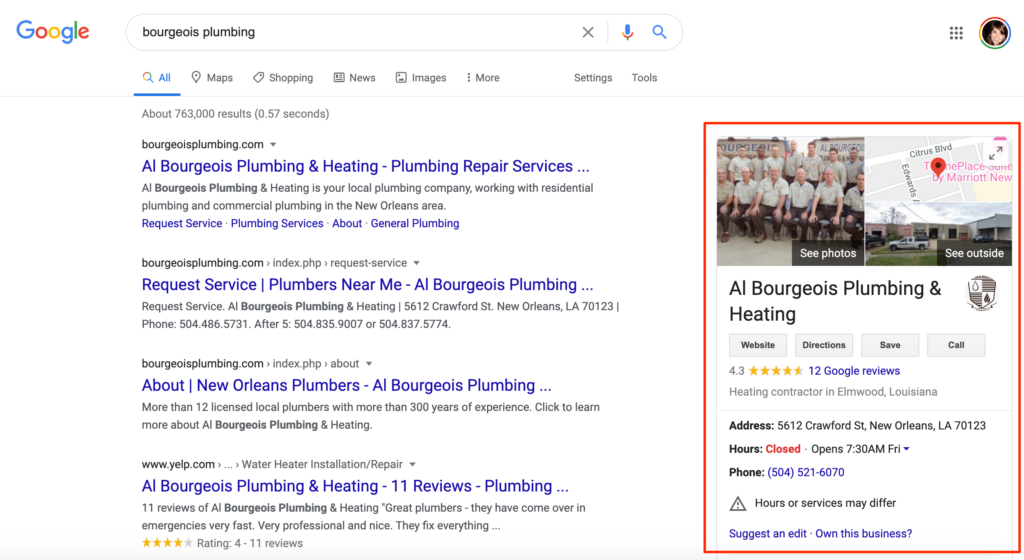Most small business owners have common goals; generate more leads, make more sales, and acquire more customers who will keep coming back for more. There are countless strategies for accomplishing these goals, many of which involve paid advertising that can be risky and expensive. Truthfully, most small businesses simply don’t have the budget to throw at costly marketing tactics that may or may not bring back the ROI they are looking for.
Having a low budget doesn’t mean there’s nothing you can do to generate more business. In fact, some of the most powerful marketing strategies we know are either cheap or free!
If you’re looking to boost your business without breaking the bank, read our 5 ideas on how to market a small business on a budget:
1. Content Marketing
Content marketing involves creating and sharing content on the internet. By content, we don’t mean promotional content that focuses on your brand, but rather informational content intended to stimulate interest in subjects that are related to your product or service.
Start a Blog for Your Business
Add a blog to your website and start posting informative and engaging articles. Your posts should aim to answer questions that your potential customers may be searching for online. It can take time to build an audience for your blog, but if you are consistently posting valuable content that actually helps your readers, it can eventually grow into an invaluable marketing tool for your business.
Guest Post on Another Blog
Try guest posting on another blog that is relevant to your audience. Search for popular blogs related to your industry, or blogs that your target audience are likely reading. Write an awesome post that fits in with their content and pitch it to their editor as a guest post. This can earn you a valuable backlink from their website to yours, and put your name in front of a larger audience.
Create a “How-To” Video
Create a “How-To” video that relates to your product/service and share it on your website and social media pages. Aim to make videos that are high-quality, educational, and genuinely helpful to the audience you want to attract. The equipment and software needed to produce and edit videos don’t have to be expensive either. Most modern-day smartphones can shoot high-quality video and you can also create text/image-based videos that don’t require you to shoot anything yourself. You can also use a free video editor such as Adobe Spark, which allows anyone, regardless of experience, to easily edit videos online.
Write an Ebook or Whitepaper
Write an e-book or whitepaper and offer it as a free download on your website. This could be a long-form guide, a case study, or anything valuable enough to make visitors want to click the download button. You can ask visitors to leave their email address in order to receive their download, which helps you build your email list with interested leads.
By creating and sharing engaging and valuable content, your business can:
- Increase organic traffic by showing up in search results
- Position your brand as an authoritative source and “thought leader” in your industry
- Create loyalty with current customers and trust with potential customers
- Educate potential customers in the early stages of their buyer’s journey
2. Email Marketing
Email marketing can be used to reach out to new/potential customers and to nurture your relationship with current customers. It’s one of the most cost-effective digital marketing strategies available today and there’s research to back it up.
The DMA (Data & Marketing Association) released a report in 2019 that states you can expect an average return of $41 for every $1 spent on email marketing. That’s a killer ROI, and on average it beats the ROI on paid advertising by a longshot. However, not every email campaign will perform. It can take a lot of research and testing to find out what works for your business.
Build Your Email List
Build your email list by collecting emails in person and on your website. It’s most effective to offer something in exchange for the customer/prospect’s email. If you are asking for it in-store or in-person, you can offer a discount on their next purchase in exchange for their email address.
If you want to collect email addresses on your website, offer up a free download such as an e-book, whitepaper, or video seminar. You can also use your blog to collect emails by having readers enter their emails in order to subscribe and receive updates when you post new articles.
Test Different Tactics
Test different tactics and modify your campaigns to improve your open rates and conversion rates. Try A/B testing with subject lines to see what gets your audience to open. Test text-based emails vs. templated image-based emails to see which performs better in terms of click-throughs and conversions. If you want to get into analytics and automations for your email campaigns, try investing in an email marketing service like MailChimp or Constant Contact.
3. Customer Referrals
Word-of-mouth referrals may be the ultimate low-cost marketing strategy. When it comes to small businesses that don’t have massive brand recognition, getting a potential customer to trust you over a competitor can be a big hurdle to jump. But, if they are referred to you by a friend who they already trust, you’ve already won half the battle.
The question is, how do you convince customers to send referrals your way? Even if you provide an excellent product and go above and beyond to serve your customers, expecting them to spread the word on their own will never be enough. You will have to go out of your way to encourage them.
The most effective way to encourage referrals is to create a referral program. Your program should offer incentives for both the customer making the referral and the new customer who is being referred to your business.
You can offer cash rewards, gift cards, discounts, or special add-ons that other customers can’t get. The key to making your referral program successful is to make the reward valuable and to make it easy for both parties to participate.
4. Social Media Marketing
According to eMarketer, “90.4% of Millennials, 77.5% of Generation X, and 48.2% of Baby Boomers are active social media users.” If you’re looking for ways to reach your target market online, chances are they are using social media nearly every day.
If you’re looking for ways to reach your target market online, chances are they are using social media nearly every day.
eMarketer
Using social media is a great way to develop your brand’s voice and identity. It gives you a unique opportunity to differentiate your business from competitors and connect on a more personal level with the people you want to do business with. There are several rules of thumb that certain marketers swear by when it comes to the breakdown of social post content. While the percentages always differ, the main point is that you should be posting more informational/ entertaining content than content that is explicitly promotional. People won’t want to keep following you if all your posts are advertisements.
Here are some ideas for social posts that engage followers and help you increase brand loyalty:
- “Behind the scenes” content that shows how your business works or reveals some personal information about you/your employees that followers can relate and attach themselves to
- Contests that incentivize your followers to share content with their followers, give you their email address or take some other desired action
- Ask engaging questions to spark conversations in the comments
- Promote your blog posts and other content that you have created
- Share industry news or relevant trends that would interest your followers
- Post polls to boost engagement and start conversations
- Share fun or interesting quote/memes to entertain your followers without getting too off-topic
5. Reputation Management/Online Reviews
While you may not see it as a “marketing strategy”, getting customers to leave you positive reviews online is one of the most powerful ways to increase your exposure and build trust with potential customers. People trust online reviews and they are far less likely to choose you over a competitor who has more positive reviews when you both show up in a search.
Create a Google My Business Listing
Create a Google My Business listing if you don’t already have one and if you do, make sure it is complete, accurate, and optimized. Be sure to upload high-quality photos and check that your NAP (name, address, phone number) is consistent with what is listed on your website and on other directory listings.

Get Reviews from Satisfied Customers
Encourage satisfied customers to leave a review either in person, over the phone, or via email. Google forbids businesses from offering incentives in exchange for positive reviews, but that doesn’t mean you can’t ask for them. Most customers are happy to share their feedback, you just need to make it easy. One way is to create a short URL for your review page and share it so that customers can get to the page without having to search for it.
Conclusion
Marketing isn’t just for big companies with astronomical budgets. With the right strategies, you can consistently boost your business without overspending. It just takes time, dedication, and a willingness to try new things!
If you aren’t sure where to start or feel like you could use some personalized advice on how to market your business on a budget, feel free to contact the experts at Olly Olly. We are always available to answer your questions and make recommendations.

Article by John Kennedy
Born and currently based in Lowell, Massachusetts, John is an impassioned copywriter and Olly Olly’s fearless Content Manager.
Like what you read? Send John a message here.

